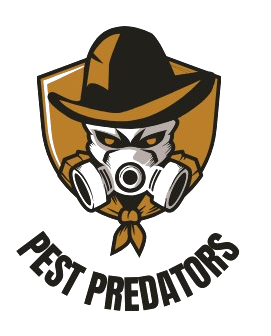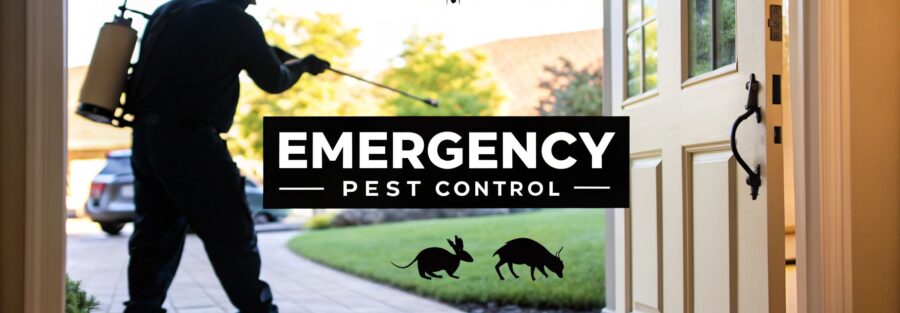That jolt of panic when you first spot pests is a familiar feeling. But what you do in the next few minutes is critical. My advice? Don't just react. Before you even think about calling for professional emergency pest control, take a breath and gather your thoughts. A knee-jerk response, like grabbing a can of bug spray, can often backfire and make the problem much worse.
What To Do The Moment You Discover Pests
Finding pests sends your brain into fight-or-flight mode, but a calm, methodical approach will always serve you better. Your main goal right now is to contain the situation and document what you've found without putting yourself or your family at risk. Charging in to clean or spray can destroy vital clues that a pest control professional needs to figure out exactly what's going on.
Safely Isolate and Document
First things first, try to isolate the area if it's safe to do so. For example, if you've seen signs of rodents in your pantry, shut the door and stuff a towel under it to block the gap. This simple step helps keep them from wandering further into your home while you wait for help to arrive.
Next, it's time to play detective. Use your phone to take clear photos or a quick video of whatever you’ve found—the pest itself, droppings, nests, or any signs of damage. Make a mental note of the exact location and time. This information is gold for a pest control expert; it helps them show up with the right tools and a solid plan of attack.
Avoid Common First-Response Mistakes
I get it, the urge to grab the nearest can of insecticide and go to town is strong. But trust me, it's almost always a mistake. DIY sprays are rarely powerful enough to wipe out an entire colony. In many cases, they just cause pests like cockroaches or bed bugs to scatter and hide deeper inside walls or furniture, making them much harder for us to find and eliminate.
Expert Insight: Reacting with the wrong treatment can be a disaster. I've seen people try to knock down a wasp nest on their own, only to provoke a dangerous swarm. A calm, informed approach protects your property and your well-being.
This flowchart breaks down the basic emergency response I recommend to all my clients.
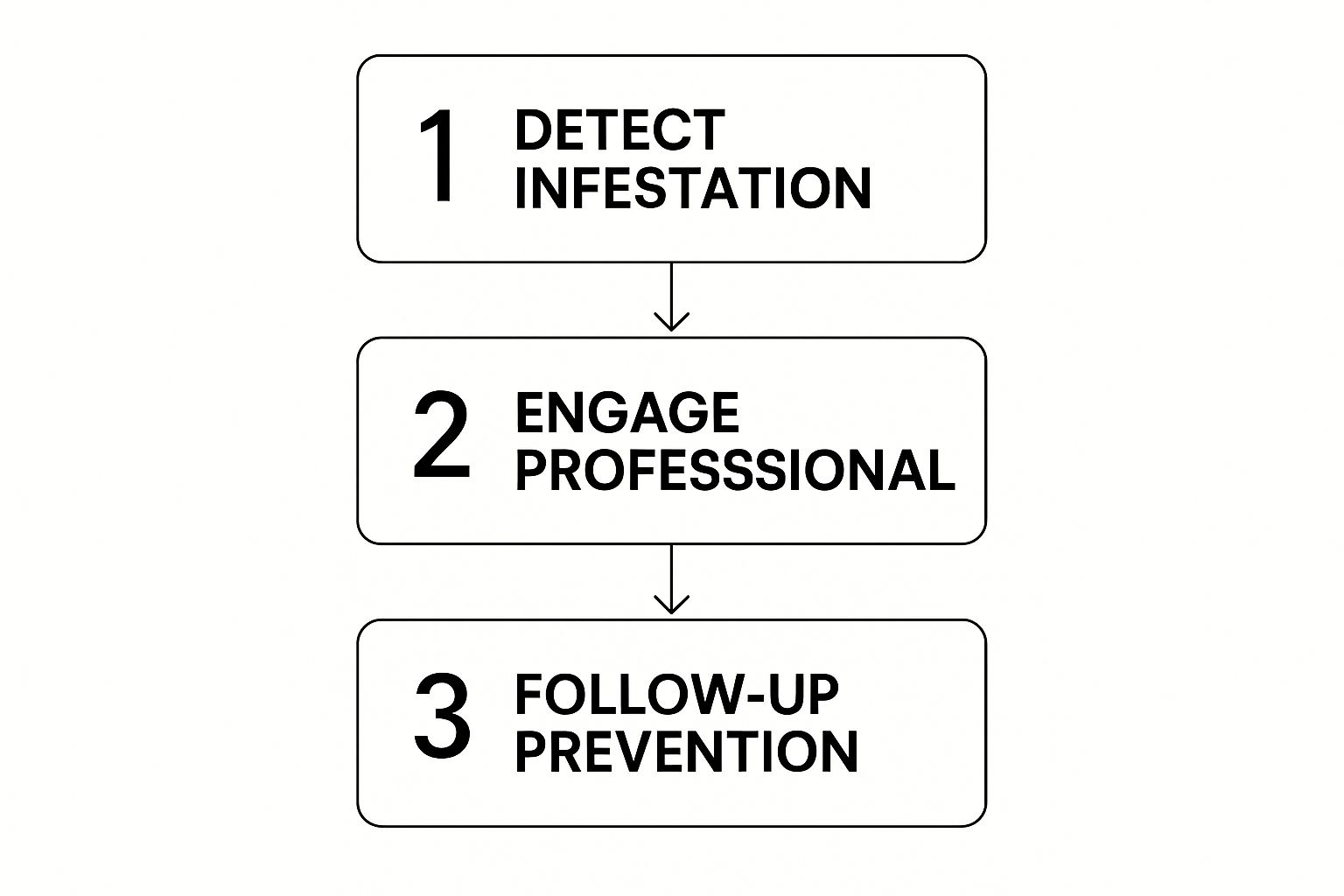
As you can see, after you've spotted the problem, the most important step is to call in a professional before you start trying to fix it yourself.
Your Immediate Pest Emergency Checklist
When you're in the middle of a pest panic, it's easy to forget the basics. Here’s a quick checklist to guide you through those first critical moments.
| Action | Why It Matters | What to Avoid |
|---|---|---|
| Isolate the Area | Contains the pests and prevents them from spreading to other parts of your home. | Do not block ventilation or create a fire hazard. |
| Document Everything | Photos/videos provide crucial evidence for accurate identification and treatment. | Don't get too close or touch anything that could be hazardous (e.g., nests, droppings). |
| Call a Professional | Experts have the right tools, knowledge, and safety gear to handle it correctly. | Don't use store-bought sprays or bombs, as they can scatter pests. |
| Keep People & Pets Away | Ensures everyone's safety, especially from pests that might bite, sting, or carry diseases. | Don't let curiosity get the better of you or your pets. |
Following these simple steps can make the difference between a quick fix and a long, drawn-out battle.
The need for a professional can't be stressed enough, especially when outside factors cause pest numbers to skyrocket. We saw this firsthand during the 2020 lockdown in the UK. Changes in human behaviour led to an explosion in rodent problems, with emergency call-outs jumping by a massive 120% between March and June compared to the year before. You can read more about how lockdowns impacted pest activity in the original report from Aviva.
Identifying The Pest and The Scale Of Your Problem
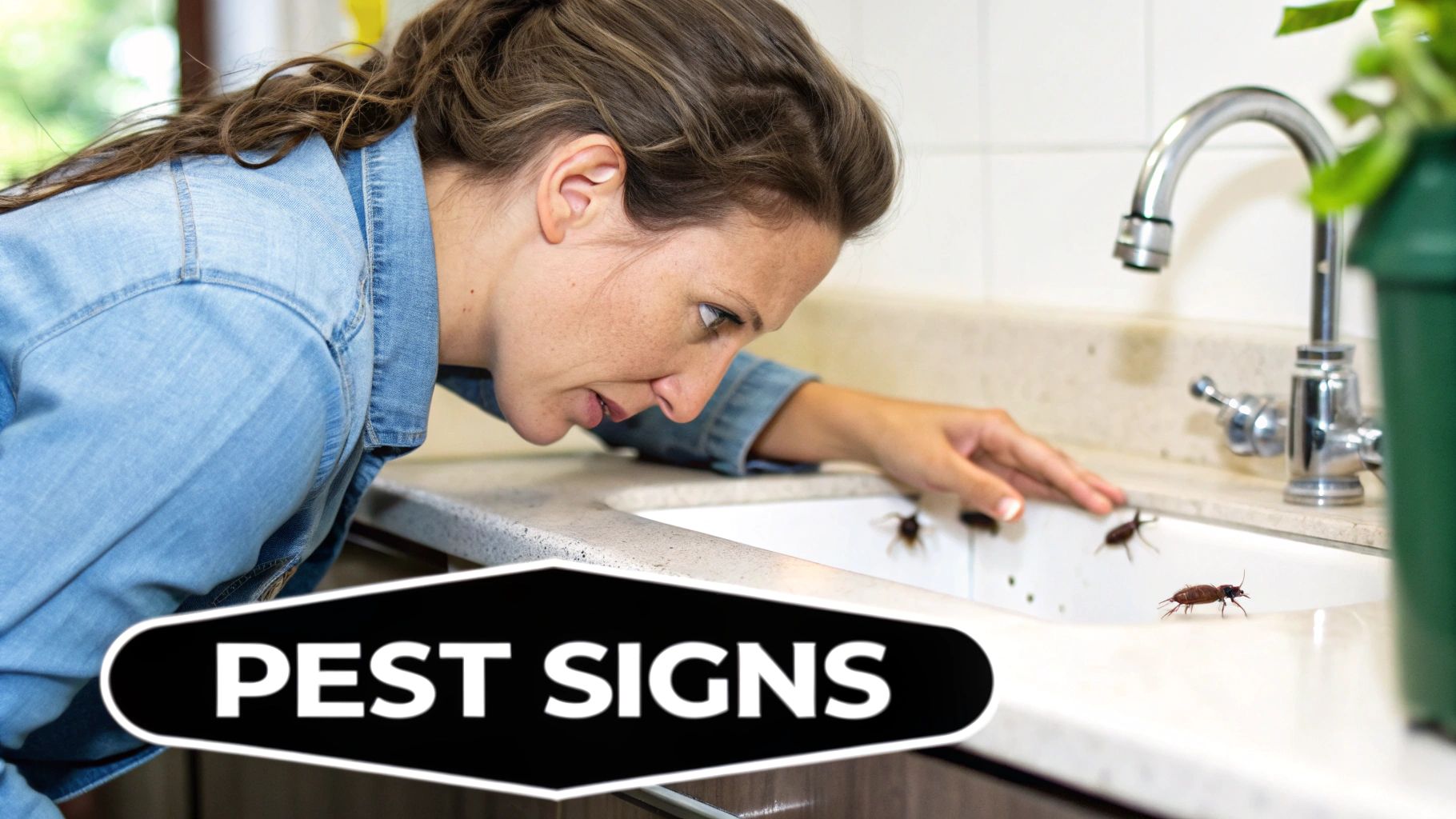
Knowing what you’re up against is half the battle. Before you can effectively call for emergency pest control, you need to gather some basic intelligence. Is it a lone scout or an invading army? The evidence left behind tells a story, and learning to read it helps you communicate the urgency and scale of the problem to a professional.
Think of yourself as a crime scene investigator. Your first clues are often the most revealing. Look for droppings, property damage, and nesting materials. These signs are unique to each pest and can help you make a positive identification, which is critical for a rapid response.
Reading the Signs: Droppings and Damage
Different pests leave behind different calling cards. Getting familiar with them is the first step to understanding what you're dealing with.
- Rats and Mice: Look for small, dark, spindle-shaped droppings. Rice-grain-sized for mice, larger for rats. You might also find gnaw marks on wood, wires, or food packaging, along with shredded paper or fabric they've gathered for nesting.
- Bedbugs: These pests leave tiny, dark reddish-brown or black stains on mattresses, bedding, and headboards. You may also find shed skins, which look like translucent, empty bedbug shells.
- Cockroaches: Their droppings often look like black pepper or coffee grounds. In areas with high moisture, they can appear as dark smear marks instead. A strong, oily or musty odour is another common sign of a heavy infestation.
Pest problems in the UK are more common than you might think. Local authorities recently dealt with 291,132 pest-infested homes in a single year—that's one visit every two minutes. Rodents were the main issue, making up 91% of visits, but bedbug cases also jumped 35%.
Assessing the Infestation Level
Once you have an idea of the pest, try to gauge how widespread the problem is. Seeing a single mouse dart across the floor might not be a full-blown emergency, but finding droppings in multiple rooms suggests a much larger, more established issue.
Key Takeaway: The location and quantity of evidence are your best indicators of scale. Signs of pest activity in your kitchen, loft, and airing cupboard point to a significant infestation that requires immediate professional action.
If you suspect a wasp or bee issue, it's crucial to identify them correctly, as their management differs significantly. Never approach a nest yourself. Instead, you can find out more by checking our guide on what you need to know about wasps and bees.
This initial assessment doesn't make you an expert, but it provides the essential details a professional needs. When you call for help, you can say, "I've found cockroach droppings in my kitchen cupboards and behind the fridge," which is far more useful than, "I think I have bugs." This specific information allows a technician to arrive with the right strategy and equipment, saving valuable time and ensuring a more effective treatment from the very start.
How To Choose The Right Emergency Pest Control Service
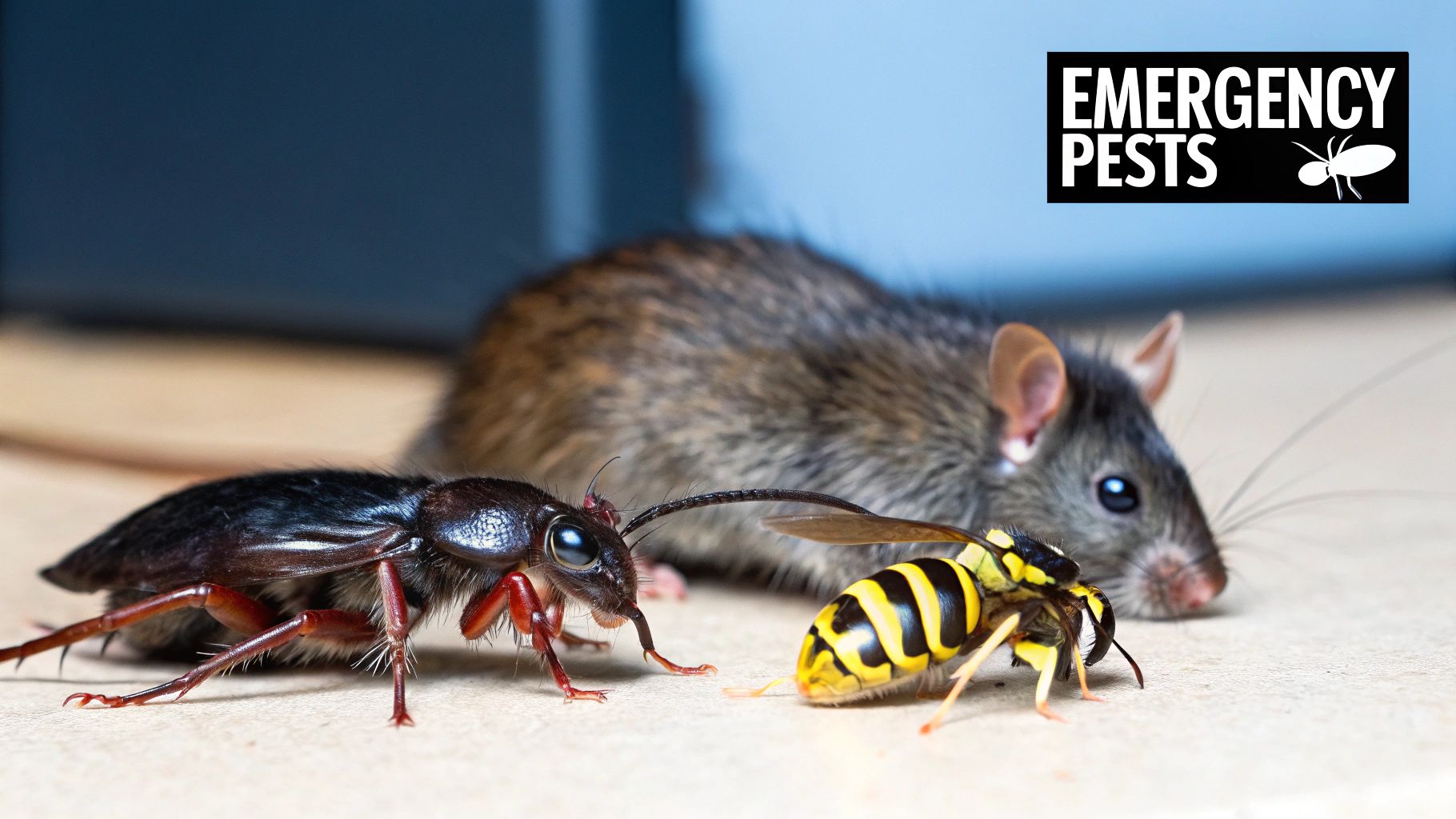
When you're facing a pest crisis, the temptation is to call the very first company you find online. I get it. The pressure is on. But in an emergency, choosing the right professional is more important than ever.
You need a reliable, knowledgeable, and safe operator—not just the fastest one. A hasty decision can lead to ineffective treatments, safety risks, or even bigger problems down the line. The key is to have a mental checklist ready so you can vet companies quickly, even when you’re feeling the heat. A few pointed questions can reveal a lot.
Key Questions To Ask Before Hiring
That first phone call is your interview with the company. Don't be shy about asking direct questions to gauge their professionalism and expertise. Their answers will help you separate the true experts from the amateurs.
Here’s what you need to confirm:
- What is your guaranteed response time? For a genuine emergency pest control situation, you need a firm commitment. A vague "we'll get there when we can" just won't cut it. Look for services that offer same-day or even within-the-hour responses for urgent cases.
- Are your technicians certified? In the UK, proper qualifications are non-negotiable. Ask if their technicians hold certifications like the RSPH Level 2 Award in Pest Management. This proves they've been trained in safe and effective pest control methods.
- Are you a member of a professional body? Membership in an organisation like the BPCA (British Pest Control Association) is a massive green flag. It shows a company’s commitment to high standards, ongoing training, and ethical conduct.
A Word of Warning: Be wary of any company that gives a vague quote over the phone or uses high-pressure tactics to get you to commit immediately. A reputable professional will explain their pricing structure clearly and give you the information you need to make a decision without feeling forced.
Spotting The Red Flags
Just as important as knowing what to look for is knowing what to avoid. Certain signs should immediately raise your suspicions and encourage you to look elsewhere.
Pay close attention to how they discuss treatment plans. Do they immediately push for a one-off chemical spray without even mentioning an inspection? This can be a sign of a superficial, "spray and pray" approach.
A true professional will often talk about Integrated Pest Management (IPM). This is a much smarter strategy that combines treatment with long-term prevention, like proofing your property to block entry points. This focus on a lasting solution is the hallmark of a quality service. You can learn more about the different options in our complete UK pest control services guide.
Choosing the right partner ensures the immediate problem is solved correctly and helps you safeguard your property against future invasions. It turns a stressful emergency into a resolved issue with a clear path forward.
Right, so you’ve made the call and a pest control expert is on their way. Knowing what to expect when they knock on your door can take a huge weight off your shoulders. An emergency visit is far more methodical than just a quick spray-and-go; it's a strategic operation to get your property secure and pest-free as quickly as possible.
The moment the technician arrives, their work begins. They aren't just there to deal with the pests you can see; they're on a fact-finding mission to understand the true extent of the problem.
The Initial Inspection and Assessment
First things first, a proper inspection. This isn't a casual look around—it's a detailed survey to identify the pest, find out how they’re getting in, and figure out just how bad the infestation has become. Think of them as a detective piecing together the evidence: droppings, nests, property damage, and of course, any live pests.
For instance, if you’ve reported a rat problem, a good technician won't stop at the kitchen. They’ll be checking the loft, behind your washing machine, in the airing cupboard, and all around the outside of your house to trace their routes and find the nest. This is the only way to treat the source, not just the symptoms.
This assessment is the foundation of the entire treatment plan. The technician will walk you through what they've found, explain the best course of action, and let you know about any safety precautions for you, your family, and your pets.
Treatment Application and Safety Measures
With a clear plan in place, the treatment begins. The methods and products used are chosen specifically for the pest you have and the environment they're in. This is where professional expertise really shines.
- Rodent Control: This usually means placing tamper-resistant bait stations in strategic, out-of-the-way locations. It's far safer and more effective than scattering loose poison bait, especially if you have children or pets.
- Bedbug Treatment: For a bad infestation, they might bring in professional heat treatment equipment. This raises the room’s temperature to a level that kills all life stages of bedbugs—from eggs to adults—without relying on chemicals.
- Wasp Nests: A technician will gear up in full protective clothing and apply a professional-grade insecticidal dust directly into the nest entrance. This method is designed to safely and quickly neutralise the entire colony.
Throughout the entire process, your safety is the top priority. The technician will tell you if you need to leave the area for a bit and will make sure every treatment complies with strict UK safety regulations.
Documentation and Your Follow-Up Plan
Before they leave, you'll receive some important paperwork. This isn't just a receipt; it’s your proof of service and a guide for what to do next. You should get a detailed report that covers what areas were checked, what pests were found, the treatments used, and any advice for follow-up actions.
Key Takeaway: Don't underestimate this paperwork. It’s a vital record of the work done and is essential if you need a follow-up visit or want to take preventative steps. It ensures everyone is on the same page.
This isn’t just good practice; it's the professional standard. In the UK, rapid response protocols are well-established. For example, some NHS Trusts require their pest control contractors to respond to emergencies within six hours and document every single detail. To see what this looks like in practice, you can explore how professionals manage urgent pest situations under these strict guidelines.
An emergency visit should leave you feeling informed, back in control, and armed with a clear plan for keeping your space pest-free.
Keeping Your Home Pest-Free After Treatment
Once the emergency pest control team has left, it's tempting to think the battle is won. But getting rid of the immediate problem is just the first victory. The real goal is to make sure it never happens again.
This is where ‘proofing’ comes in. It’s all about turning your home into a fortress that pests simply can’t get back into. Think of it as the most critical step for lasting peace of mind. It requires a bit of detective work, but it’s an investment that prevents future call-outs and sleepless nights. You have to start thinking like a pest: where are the gaps, the cracks, the easy ways in?
Sealing Entry Points for Good
First things first: block their path. Pests are incredibly resourceful. A mouse can squeeze through a hole the size of a pencil, and a rat only needs a gap the width of a 10p coin. You'd be surprised where they find a way in.
Grab a torch and start with a thorough inspection of your home’s exterior and interior. Look for:
- Cracks and Gaps: Use a durable sealant like silicone caulk or even expanding foam to fill any cracks in the foundation, walls, and around where utility pipes enter your home.
- Gaps Under Doors: This is a classic entry point. Fitting brush or rubber door sweeps creates a solid physical barrier they just can't squeeze under.
- Vents and Drains: Cover any air bricks, vents, or open drains with fine wire mesh. It still allows for airflow but stops rodents and larger insects dead in their tracks.
Every sealed crack is one less invitation for pests to move back in.
Professional Tip: Pay extra attention to the junctions where different materials meet—like where a brick wall meets a window frame or where pipes enter the building. From our experience, these are almost always the weakest points and the first places pests exploit.
A Room-by-Room Vulnerability Check
Now, let's take the search inside. Different rooms offer different attractions for pests, so a systematic check ensures you don't miss a single weak spot.
Kitchens and Utility Rooms
This is often ground zero for infestations, thanks to the constant supply of food and water. Pull out the fridge and washing machine and check behind and under them for any gaps in the flooring or walls. Make sure all food is stored in airtight containers—plastic bags are no match for a determined rodent. And, of course, clean up spills and crumbs straight away.
Lofts and Basements
These spaces are easily forgotten, but they’re prime real estate for pests looking for a quiet place to nest. Get up in the loft and inspect for gaps in the eaves, damaged roof tiles, or holes around joists. A properly sealed loft is absolutely crucial for stopping rats from setting up home above your head.
If you want a clearer picture of the costs involved in rodent-proofing, our guide on the pest control cost for rats breaks down the common measures and expenses.
By systematically finding and fixing these vulnerabilities, you switch from being reactive to proactive. You’re no longer just waiting for the next emergency—you're actively preventing it from ever happening.
Got Questions About Emergency Pest Control? We've Got Answers
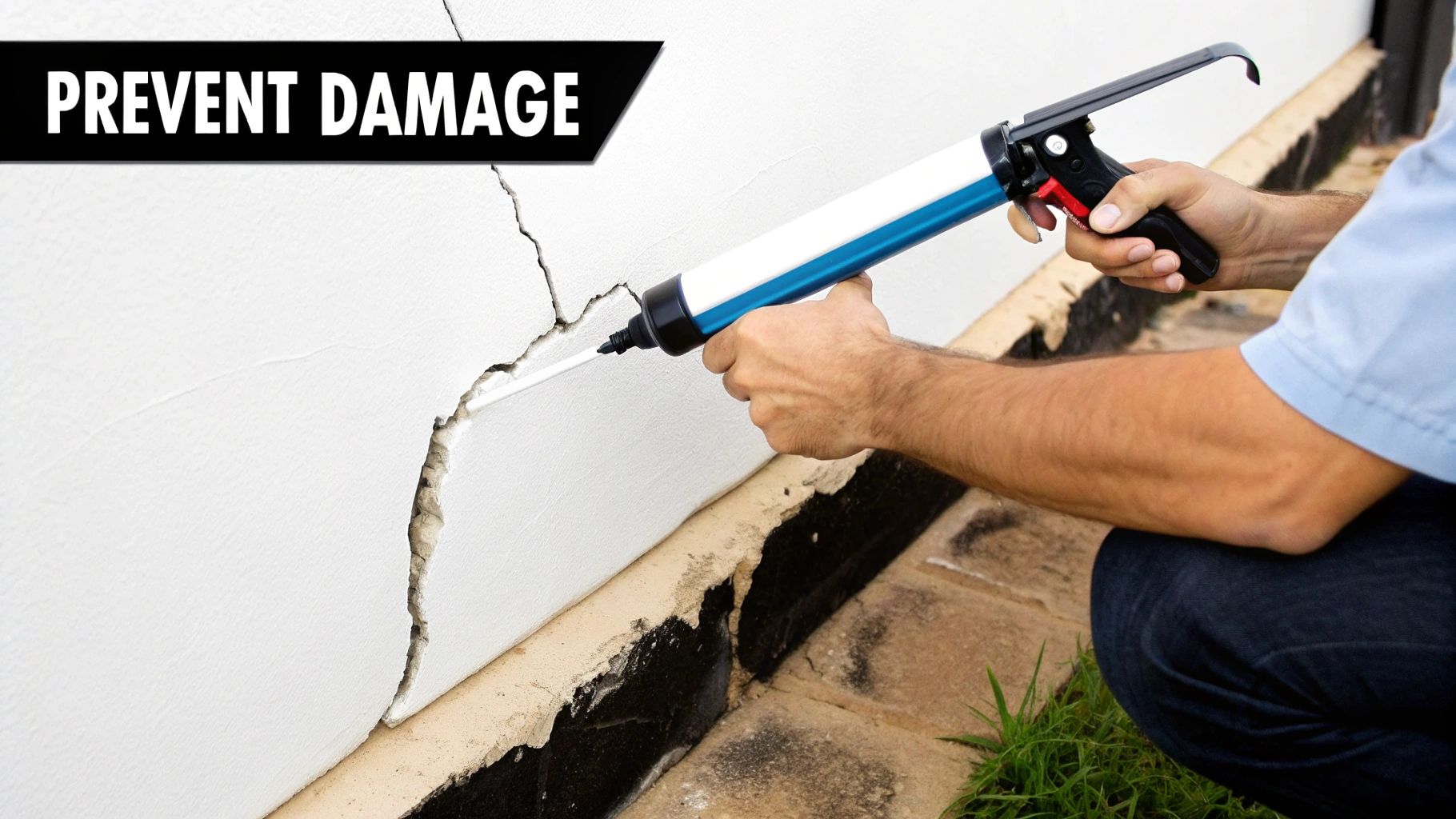
When you’re staring down a sudden pest invasion, it’s completely normal for your mind to be racing. It’s a stressful situation, and you need clear, straightforward answers to make the right call for your home and family.
Here are the most common questions we get from clients who need help, fast.
How Quickly Can You Get Here?
For a genuine emergency pest control situation, you shouldn’t have to wait around. Any reputable company will be aiming to get to you within a few hours of your call. Same-day service is the standard we hold ourselves to.
If you’re running a business like a restaurant or a care home, that response time gets even quicker. In those critical cases, we can often be on-site in just an hour or two. Always ask for a clear ETA when you book the call-out so you know exactly when to expect us.
Are the Treatments Safe for My Family and Pets?
Absolutely. A professional technician's number one priority is the safety of your household. We’re highly trained to use targeted treatments that get the job done with minimal risk.
This might mean using tamper-resistant bait stations for rodents or carefully placing products in voids and crevices where kids and pets can’t reach them. We’ll always talk you through the safety measures before we start and let you know if a room needs to be kept clear for a short while afterwards.
Our Approach: Professional pest control isn't about indiscriminately spraying chemicals. It’s a precise, strategic job. We use the right product in the right place to solve the problem with the least possible disruption to your home and life.
Will One Visit Be Enough to Fix It?
That really comes down to the pest you’re dealing with and how established the infestation has become. An emergency visit is designed to get the immediate threat under control. For something like a wasp nest, one visit is usually all it takes. Job done.
But for more stubborn pests like rats, mice, or cockroaches, the first visit is about knocking the population down and stopping the problem from getting worse. We will almost always recommend follow-up visits to ensure the issue is fully resolved and give you solid advice on long-term proofing to stop them from ever getting back in.
What Does an Emergency Call-Out Typically Cost?
The cost of an emergency pest control service in the UK varies quite a bit. The final price depends on a few things: the type of pest, the size of your property, and how bad the infestation is.
As a rule, you can expect an emergency call-out to cost more than a standard, pre-booked appointment because of the urgent, out-of-hours nature of the work. Before you agree to anything, a trustworthy company will give you a clear quote over the phone. This should break down the call-out fee and the estimated cost of the treatment itself, so there are no surprises.
When an unexpected pest problem shatters your peace of mind, you need a partner who can act with speed and genuine expertise. Pest Predators Limited delivers rapid, professional solutions to secure your property and protect your health.
If you need urgent help, visit our website at https://www.pestpredatorslimited.co.uk to get assistance now.
